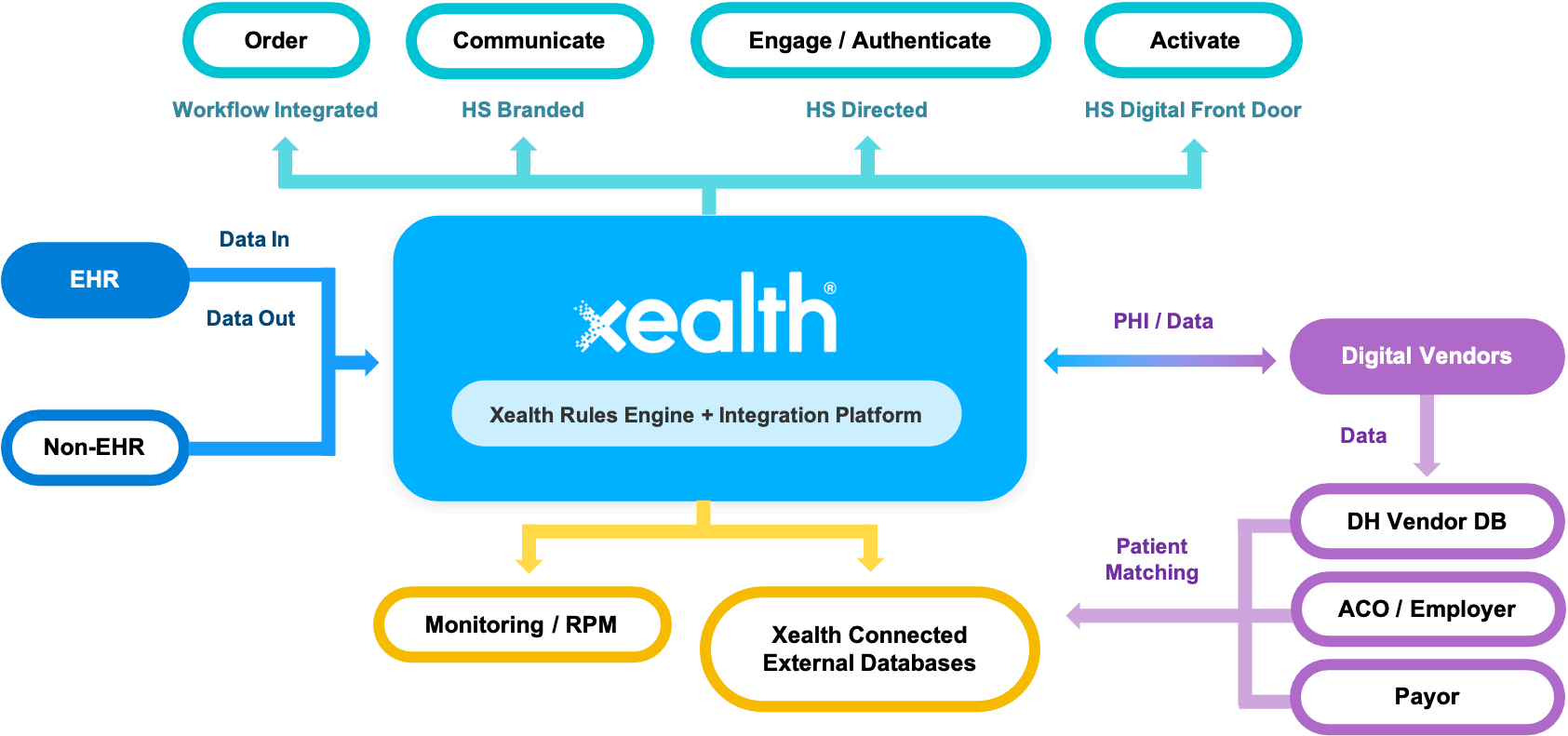In the rapidly evolving landscape of healthcare, security remains a top priority for health systems and their executives. As highlighted in a recent article from Becker’s, one of the biggest concerns for CFOs in 2024 is the increasing need for robust cybersecurity measures to protect sensitive patient data and maintain operational integrity. With cyber threats becoming more sophisticated and frequent, health systems must prioritize securing their networks against potential breaches. This is where Xealth’s innovative platform plays a critical role by reducing the number of external connections to health systems’ networks, thus providing a distinct layer of security.
The Rising Threat of Cybersecurity in Healthcare
Healthcare organizations are prime targets for cyberattacks due to the vast amount of sensitive information they handle. A successful breach can result in significant financial losses, reputational damage, and compromised patient safety. As CFOs and other healthcare leaders navigate these challenges, they are increasingly focused on adopting solutions that enhance their cybersecurity posture without disrupting clinical workflows.
The Complexity of External Connections
One of the primary vulnerabilities in health systems’ networks is the multitude of external connections required to integrate various digital health solutions. Each connection represents a potential entry point for cyber attackers. Managing and securing these connections can be resource-intensive and complex, often requiring significant IT oversight.
Xealth’s Approach to Security
Xealth addresses this critical issue by streamlining and securing the integration of digital health tools into existing health systems. By acting as a centralized platform, Xealth significantly reduces the number of external connections to a health system’s network. This consolidated approach not only simplifies the integration process but also minimizes the attack surface for potential cyber threats.
Here’s how Xealth enhances security:
- Centralized Management: Xealth serves as a single point of integration for various digital health solutions, reducing the need for multiple direct connections to the health system’s network. This centralization simplifies monitoring and management, making it easier to detect and respond to potential security issues.
- Enhanced Visibility: With Xealth, health systems gain better visibility into the digital health tools being used across the organization. This comprehensive view allows for more effective risk management and ensures that all connected solutions meet the necessary security standards.
- Streamlined Compliance: Regulatory compliance is a significant concern in healthcare cybersecurity. Xealth’s platform helps ensure that all digital health integrations comply with relevant regulations, such as HIPAA, by providing standardized and secure connections.
- Reduced IT Burden: By consolidating external connections, Xealth alleviates the burden on IT departments. This allows IT professionals to focus on other critical tasks, such as proactive security measures and system improvements, rather than managing numerous individual connections.

Aligning with Interoperability Requirements
In addition to enhancing security, Xealth’s platform aligns with the Office of the National Coordinator’s (ONC) interoperability rules. The recent HTI-2 proposed rule aims to improve patient engagement, information sharing, and public health interoperability. Compliance with these rules is crucial for health systems to ensure seamless data exchange and enhance patient care.
Xealth supports interoperability by:
- Facilitating Data Exchange: Xealth’s platform enables seamless data sharing between different digital health solutions and electronic health records (EHRs), ensuring compliance with ONC’s interoperability standards.
- Improving Patient Engagement: By integrating various patient-facing digital health tools, Xealth helps health systems enhance patient engagement, meeting the ONC’s objectives for improved patient access to their health information.
- Supporting Public Health Initiatives: Xealth’s ability to integrate and manage multiple digital health solutions aids health systems in contributing to public health reporting and initiatives, aligning with the goals of the HTI-2 proposed rule.
Real-World Impact
Health systems utilizing Xealth have reported significant improvements in their cybersecurity posture and interoperability capabilities. By reducing the number of external connections and facilitating seamless data exchange, these organizations have not only enhanced their security but also experienced increased efficiency in their digital health integrations. This streamlined approach ensures that healthcare providers can focus on delivering high-quality patient care without compromising on security or compliance.
Conclusion
As CFOs and other healthcare leaders continue to prioritize cybersecurity and interoperability in 2024 and beyond, innovative solutions like Xealth are proving essential in addressing these complex challenges. By reducing the number of external connections and aligning with ONC’s interoperability rules, Xealth provides a distinct layer of security that safeguards sensitive patient data, ensures compliance with regulatory standards, and enhances patient engagement. In an era where cyber threats are ever-present, Xealth’s platform offers a robust defense, enabling health systems to operate with confidence and focus on their primary mission—delivering exceptional patient care.
About Xealth: Xealth is a leading digital health platform that enables healthcare systems to integrate, manage, and deploy digital health solutions seamlessly and securely. By simplifying digital health integration, Xealth enhances patient care, optimizes clinical workflows, and fortifies health systems against cyber threats while supporting interoperability and regulatory compliance.


